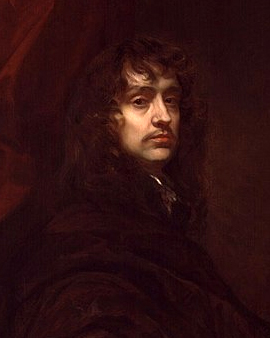


Peter Lely was originally born as Pieter van der Faes in the Westphalian town of Soest, which at that time belonged to the Netherlands. He later gave himself the name Lely in reference to the heraldic lily that decorated the gable of his father's house in The Hague. Lely first studied in Haarlem as a student of Pieter de Grebber. With the help of his teacher he was finally accepted into the Luke's Guild in 1637. Lely probably came to London around 1643. There he initially dealt with mythological and religious themes and also made some portraits. His style was strongly influenced by Anthony van Dyck and the Dutch Baroque. This style was very popular in England at that time. As van Dyck had died only a few years earlier, Lely was offered a good opportunity and he was soon able to establish himself as an official portrait painter at court. Even after the execution of Charles I and the establishment of a temporary republic, Lely was able to maintain his status.
With the restoration of the monarchy in 1660, Lely was again appointed official court painter. This time he served under Charles II, who offered him a pension of 200 pounds a year, the same amount that van Dyck received in this position at the time. Lely was also granted English citizenship. He had so many commissions as a court portraitist that he only painted the faces of his models himself. He then left the completion of the paintings to his students and assistants. In this way, Lely was able to produce a considerable number of paintings during his career. Among his most important students were Nicolas de Largillière, John Greenhill and William Wessing. Among Lely's most outstanding portraits are the series of 10 portraits of ladies-in-waiting, now known as "Windsor Beauties". Of its mythological motifs, "Nymphs at a fountain" stands out in particular. This is mainly due to the fact that Lely rarely made paintings of this kind. Lely died working on his easel. He was painting a portrait of the Duchess of Somerset. Only a year earlier, King Charles II had knighted him.
Lely was not only a popular and talented artist of his time. He was also a great art connoisseur and collector. He was particularly fond of the old masters such as Veronese, Tizian, Rubens and Claude Lorrain. He had bought many works after the execution of Charles I, when his art collection was dissolved by the Commonwealth. Lely also prepared the mezzotint in England. This is a gravure printing process developed in the Netherlands. He wanted to increase the circulation of his own works with this printing process.

Peter Lely was originally born as Pieter van der Faes in the Westphalian town of Soest, which at that time belonged to the Netherlands. He later gave himself the name Lely in reference to the heraldic lily that decorated the gable of his father's house in The Hague. Lely first studied in Haarlem as a student of Pieter de Grebber. With the help of his teacher he was finally accepted into the Luke's Guild in 1637. Lely probably came to London around 1643. There he initially dealt with mythological and religious themes and also made some portraits. His style was strongly influenced by Anthony van Dyck and the Dutch Baroque. This style was very popular in England at that time. As van Dyck had died only a few years earlier, Lely was offered a good opportunity and he was soon able to establish himself as an official portrait painter at court. Even after the execution of Charles I and the establishment of a temporary republic, Lely was able to maintain his status.
With the restoration of the monarchy in 1660, Lely was again appointed official court painter. This time he served under Charles II, who offered him a pension of 200 pounds a year, the same amount that van Dyck received in this position at the time. Lely was also granted English citizenship. He had so many commissions as a court portraitist that he only painted the faces of his models himself. He then left the completion of the paintings to his students and assistants. In this way, Lely was able to produce a considerable number of paintings during his career. Among his most important students were Nicolas de Largillière, John Greenhill and William Wessing. Among Lely's most outstanding portraits are the series of 10 portraits of ladies-in-waiting, now known as "Windsor Beauties". Of its mythological motifs, "Nymphs at a fountain" stands out in particular. This is mainly due to the fact that Lely rarely made paintings of this kind. Lely died working on his easel. He was painting a portrait of the Duchess of Somerset. Only a year earlier, King Charles II had knighted him.
Lely was not only a popular and talented artist of his time. He was also a great art connoisseur and collector. He was particularly fond of the old masters such as Veronese, Tizian, Rubens and Claude Lorrain. He had bought many works after the execution of Charles I, when his art collection was dissolved by the Commonwealth. Lely also prepared the mezzotint in England. This is a gravure printing process developed in the Netherlands. He wanted to increase the circulation of his own works with this printing process.
Page 1 / 4








